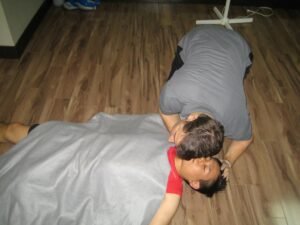Shock is basically a state in which the body shuts down. The body goes into this state if there is not enough blood circulating which can lead to multiple organ failure. Other life-threatening complications can occur such as heart failure. There are major types of shock – cardiogenic, septic, hypovolemic and anaphylactic. Take note that all of these are considered life-threatening and any symptoms present would require immediate medical care.
Signs and symptoms of shock
It is important that you can recognize the symptoms of shock in order to save a life. These symptoms typically signal that your body is about to shut down, thus you should seek emergency assistance right away.

- Rapid, weak or no pulse
- Diminished blood pressure
- Confusion
- Irregular heart rate
- Cool clammy skin
- Anxiety
- Fast and shallow breathing
- Lightheadedness
- Low urine output
- Nausea
- Chest pain
- Low blood sugar
- Dry mouth and thirst
- Fever (septic shock)
- Dilated pupils
- Hives and swelling of the throat and face (anaphylactic shock)
Causes of shock
Always remember that anything that can affect the blood flow through the body can eventually lead to shock. The common causes of include:
- Dehydration
- Profuse blood loss
- Very low blood pressure
- Allergic reaction
- Nerve damage
- Heart failure
- Blood infections
Types of shock
There are four main types of shock that you should be familiar with. Each type can be caused by various events.
- Anaphylactic – it is a complication of a severe allergic reaction. Anaphylaxis is typically caused by insect bites or food allergies. A severe reaction can lead to low blood pressure, difficult breathing, rapid pulse, blocked airways and eventually shock. Individuals with severe allergies usually bring along an EpiPen which automatically injects epinephrine in order to thwart a reaction as well as avert anaphylactic shock.
- Cardiogenic – any injury to the heart can diminish the flow of blood in the body, resulting to cardiogenic shock. The causes for this type of shock include irregular heart rhythm, damage to the heart muscles, slow heart rhythm and tears in the heart muscles.
- Septic – this occurs once bacteria and toxins enters the bloodstream and damages the organs and tissues.
- Hypovolemic – caused by severe loss of blood. Inadequate supply of blood to the vital tissues and organs in the body will eventually lead to shock.
How to deal with shock
In most cases, shock can lead to unconsciousness. It can cause both cardiac and respiratory arrest. If an individual goes into shock and becomes unconscious, call for emergency assistance and follow these first aid measures.
- Check if the individual is breathing and has a heartbeat.
- If the individual is not breathing and does not have a heartbeat, perform CPR.
In case the individual is breathing, follow these steps:
- Check for breathing every five minutes.
- Position the individual in a lying position on his/her back.
- Elevate the feet at least 12 inches above the ground. This is called as the shock position since it helps keep the blood in the vital organs where it is needed the most.
If you suspect movement can cause more harm, do not move the individual or position in a flat lying position. Do not move if there are injuries to the head, back, neck, spine and legs.
